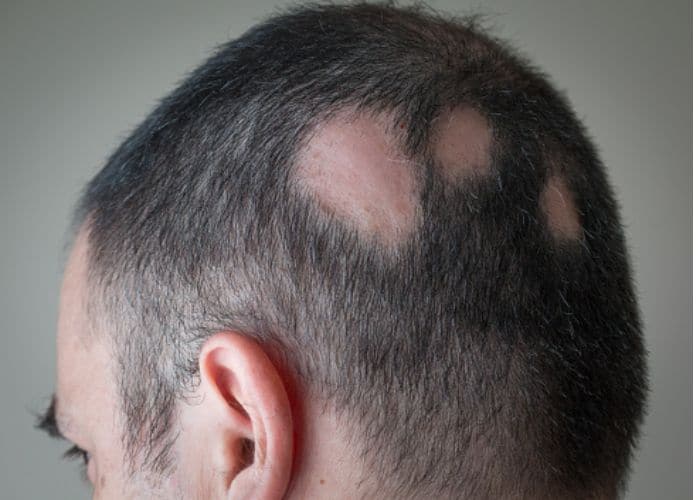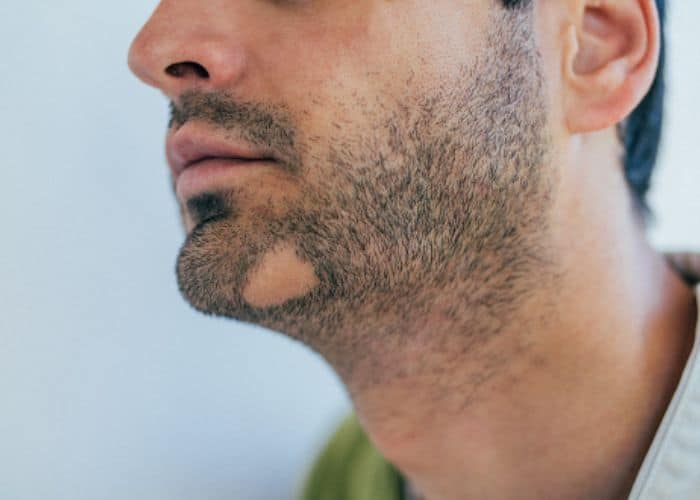Hair loss is more than a health problem that happens to a significant proportion of the population worldwide. The causes of hair loss are various and can be hard to identify. Despite that, there is an increasingly growing amount of hair loss solutions created for the same purpose of presenting a head of beautiful hair.
What Is Alopecia Areata
As many of us are familiar with, alopecia areata is a condition characterized by hair loss from some areas of the body. It often results in a few bald spots on the scalp the size of a coin. That is why it is also called spot baldness. In a few cases, all the hair is lost on the scalp, or all body hair is lost, and loss can be permanent. It is distinctive from the pattern of hair loss that is more common among males.
Alopecia Areata Symptoms
The most common and prominent symptom of alopecia areata must be patchy hair loss, primarily on the scalp. Other areas, including the beard and eyelashes, can be affected, as well as other body parts. The patches can take many shapes, with round and oval being the most typical ones.


The loss of hair usually happens within weeks or even days. There could be itching or burning in the area before alopecia areata occurs. But the hair follicles are not necessarily damaged, so the hair can usually grow back if the inflammation of the follicles subsides. With that said, most people can fully recover from alopecia areata without any treatments. Only about a third of the patients suffer from extensive and continuous hair loss conditions.
In most alopecia areata cases, hair can easily pull out along the edge of the patch in which the follicles are already being attacked by the body’s immune system than away from the patch where they are still healthy. As a matter of fact, other health problems can also cause the hair to fall out in similar patterns, so hair loss alone is not used to diagnose alopecia areata.
In rare cases, some patients suffer from the loss of all hair on the scalp. This condition is referred to as “alopecia totalis.” On the other hand, Alopecia Universalis refers to the loss of hair on the entire body.
Unlike most other hair loss conditions, hair loss caused by alopecia areata is rather spontaneous than predictable. The hair can grow back at any time and shed again. The degree of hair loss and regrowth varies significantly from individual to individual.
Alopecia Areata Causes
Alopecia areata is seen as a systemic autoimmune disorder where the body attacks its own anagen hair follicles and stops hair growth. Normally, hair follicles are kept secure from the immune system, which is called immune privilege. Breaching this immune privilege state is basically the cause of alopecia areata.
It happens with a higher frequency to people who have affected family members, suggesting heredity may be a factor. One in five people with the disease has at least a family member who has also developed alopecia areata. In addition, alopecia areata along with autoimmune diseases, including rheumatoid arthritis, type 1 diabetes, and celiac disease share other genetic risks. Other risk factors include Down’s Syndrome, thyroid disease, or vitiligo.
People who are otherwise healthy and have no other skin disorders can get alopecia areata. Initial presentation most commonly occurs in the early childhood, late teenage years, or young adulthood but can happen at any age. Patients tend to have a slightly higher incidence of conditions related to the immune system, such as asthma, allergies, atopic dermatitis, and hypothyroidism.
One thing worth noting is alopecia areata does not occur evenly across races. Compared with white females, African Americans and Hispanic females have a greater chance of alopecia areata. Besides, there is a lower risk in Asian people than in people of other ethnicities.
So far, only a few studies have examined the patterns and determinants of alopecia. Pathophysiological factors are mainly unexplored. Further research is warranted that takes into consideration environmental, behavioral, genetic, and socioeconomic factors as well as access to healthcare.
Alopecia Areata Diagnosis
Doctors can usually diagnose alopecia areata quite quickly by examining patients’ symptoms. They typically look at the degree of hair loss and examine hair from affected areas using a microscope. If the doctor cannot make a diagnosis after an initial clinical examination, they can perform a skin biopsy. A blood test could be needed to rule out other autoimmune diseases. Given the symptoms of alopecia areata are so distinctive, It is usually quick and straightforward to make a diagnosis.
Alopecia Areata Treatments
So far, no therapeutic treatments have proved to be curative and preventive for alopecia areata. Despite that, a certain extent of success can be expected with the use of the corticosteroid medications clobetasol or fluocinonide, corticosteroid injections, or cream for severe hair loss. Corticosteroids are powerful anti-inflammatory drugs that can suppress the immune system. They are commonly administered through local injections, topical ointment application, or orally. Other medications, including Minoxidil, SADBE, Anthralin, and mometasone, promote hair regrowth. It is vital to consult a healthcare professional before taking any medicines for alopecia areata as they all have side effects that many people find hard to deal with.
However, no one treatment is effective in all cases, and some individuals may show no response to any treatment. When alopecia areata is associated with celiac disease, treatment with a gluten-free diet allows for complete and permanent regrowth of scalp and other body hair in many people, but in others, remissions and recurrences are seen. This improvement is probably due to the normalization of the immune response due to gluten withdrawal from the diet.
Alopecia areata does not make people sick, nor is it contagious. Despite that, it is hard to adapt to and accept it mentally. For many people, alopecia areata is a somewhat traumatic disease that entails treatment addressing the emotional aspect of hair loss and the hair loss itself.
Hair Patch For Alopecia Areata
A hair patch, also known as a hairpiece or toupee, is a modern hair loss solution that offers a partial coverage of the hair loss area on your head to achieve a full hair look. A hair patch is generally made of real human hair or synthetic hair.
In comparison with medications for alopecia areata, A hair patch has proved to be a better solution for a variety of reasons. First of all, it is entirely non-invasive, meaning there are no side effects at all. Besides, it can show its full result as soon as it is put into use without any wait time. And most importantly, it can be easily customized according to the users’ needs and requirements. All the hair patch details such as hair length, color, and hairstyle can be tailored exclusively to fulfill the users’ wishes. So there is incredible flexibility and freedom for the wearers to appear the way they need.
How to Measure the Size for Bald Spot?
To customize a hair patch successfully, it is vital to correctly measure the hair loss area to determine the size of the hair patch that perfectly matches that area and make a template accordingly afterward. That said, it is effortless to get the measurement and make the template provided that the area is of a regular shape. All you would need to know is the length and width of that area. Both can be easily measured using a measuring tape.
The videos below will show you detailed tutorials for making a template for regular and irregular hair loss areas.
Regular size:
Irregular size:
Necessary Tools:
Plastic wrap, Marker, Tape, Scissors, Measuring tape.
Steps
- Firstly, remove a part of the plastic wrap and cover the full head entirely and firmly.
- Next, use a marker to draw clear lines along the hair loss area.
- Then attach a few pieces of the tape to the wrap until the hair loss area is wholly covered. Several layers are recommended to make the template sturdier.
- Lastly, remove the wrap and cut the tapered template along the outline drawn early.
Now you have the template and are ready to customize the hair patch. As a leading hair piece manufacturer across the globe, New Times Hair is committed to customizing top-quality hair patches for alopecia areata patients. All our hair patches are made from classy 100% real human hair that is carefully sourced and processed. All hair patch details can be tailored specifically to the users’ needs. Contact us at infor@newtimeshair.com to customize yours now!